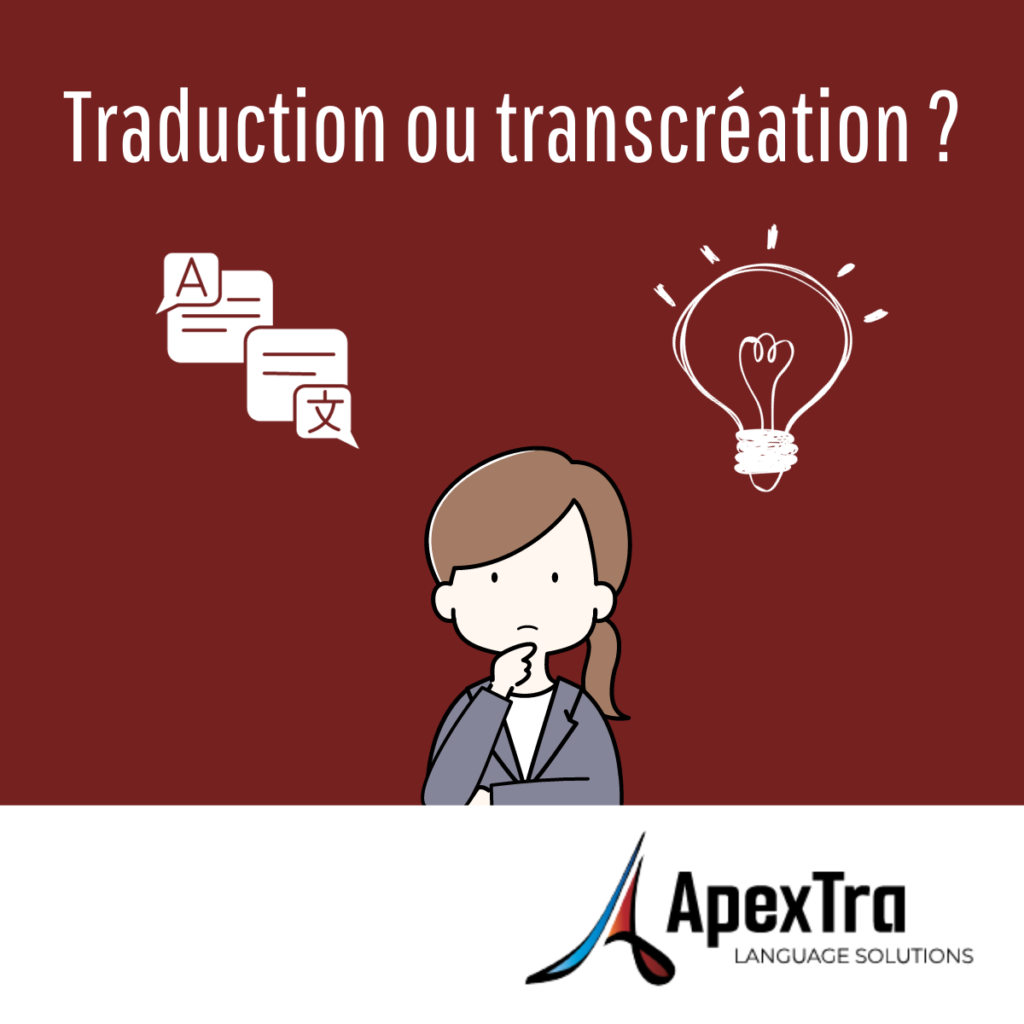
Translation and transcreation are both used to transfer a message from a source language—the original language of the text— to a target language—the language into which the message is translated. So what’s the difference between these two processes? Today, we take a look at the difference between translation and transcreation. In an increasingly globalized world, it’s crucial to know the difference and choose the right option.
Translation or linguistic rigor
First of all, a quick reminder about translation. It’s a meticulous process that transmits a message from one language to another while preserving its precision, context and the integrity of the original content. It is a rigorous practice whose primary objective is to ensure that the translated text remains faithful to the original content. Translators strive to bridge linguistic gaps, delivering a message equivalent to the original, without altering its essence. This disciplined approach is essential for some content, and the priority in this case is to communicate information, without including emotional nuances.
Transcreation, or emotional creation
Transcreation, on the other hand, goes beyond the limits of literal translation, plunging straight into the realm of emotions and cultural nuances. It’s a creative process that not only conveys the message, but adapts it to resonate with the sensibilities of the target audience. Transcreation is essential for marketing and creative content, where capturing the emotions of the target audience is as important as conveying the message. By tapping into local cultural elements, idioms and emotions, transcreation ensures that content feels local and touches the audience at a higher level. It’s an adaptive, personalized approach that takes into account how people from different cultures perceive and react to information.
The challenges of translation and transcreation
In translation, idioms and cultural nuances are a common challenge. Literal translation of idiomatic expressions is often a source of confusion or unintentional humor, as not all cultures share the same idiomatic expressions. For example, translating the French expression “il pleut des cordes” directly into another language can confuse unfamiliar readers. Striking a balance between maintaining the original intent and finding culturally appropriate equivalents requires a nuanced understanding of both languages and their respective cultures.
In transcreation, the challenge is to preserve the emotional impact and tone of the original content. Cultural sensitivity is key, and what may evoke a certain emotion in one culture may not have the same resonance in another. For example, humor varies considerably from culture to culture, and a joke that works well in one country may fall flat or even offend in another. Transcreation professionals must navigate this tricky terrain, ensuring that emotional nuances are not lost in translation, while avoiding cultural faux pas that could harm the reception of the message. This requires an in-depth knowledge of cultural norms, taboos, and subtleties that shape emotional reactions in different societies.
Which option to choose?
Translation
- For factual and technical content
- Information-driven
- Less dependent on cultural nuances
- Maintains a standardized tone
- Cost-effective and efficient
Transcreation
- For creative content that appeals to the emotions
- Emotional engagement and cultural resonance
- Emphasizes cultural adaptation
- Tone and style adapted to culture
- Requires more resources but offers customized results
As you can see, the choice between translation and transcreation depends on the content of the text, the purpose of your translation and the scope of your content.
Whatever you choose, ApexTra is here to ensure your message is never lost in translation!